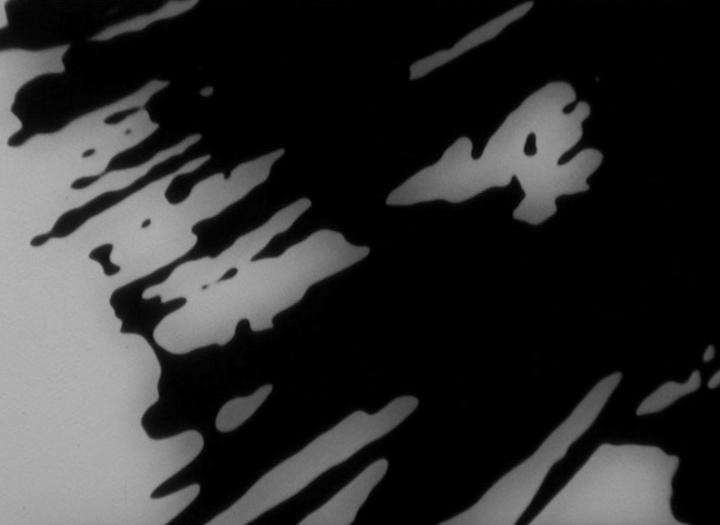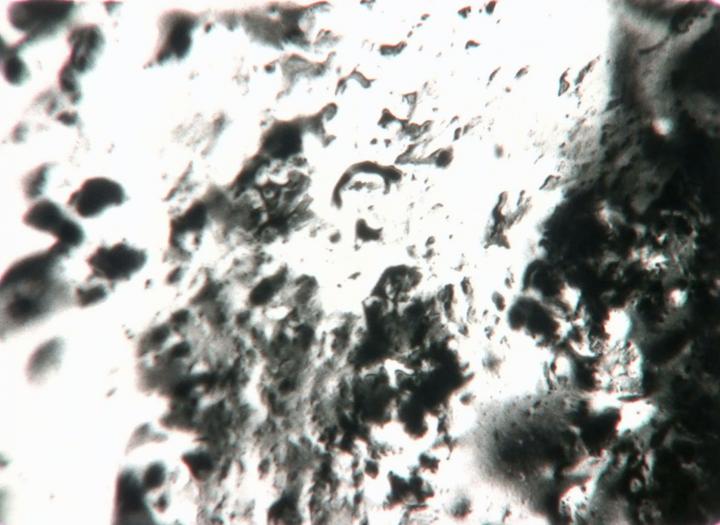For a short period in the 1970s, then-Chicago-based filmmaker Bruce Wood created several amazing and intensely beautiful black and white abstract films. And then he stopped; not an uncommon story. In recent years growing attention has been paid to "forgotten" regional filmmakers around the country - and Chicago is no exception. Hidden gems are being rediscovered and shining again years after they were made.
Bruce Wood studied painting, printmaking, and filmmaking at the Massachusetts College of Art (BFA) and enrolled at the School of the Art Institute of Chicago (MFA), to study filmmaking under Stan Brakhage. It's easy to see the painterly qualities in his films. One can feel possible influences from Malevich and Mondrian on one side to the abstract expressionism of Pollack and De Kooning on the other. But Wood's films also hint at a wide history of experimental filmmaking as well, from early abstract pioneers such as Vikking Eggeling and Hans Richter to the lyrical work of Bruce Baillie and Stan Brakhage to the then-current work of Structuralist filmmakers.
Despite the many threads to be found in Wood's films, they aren1t "poor copies" of other artists' work - he has a style and feel that seems quite unique and individual –White Light Cinema
Programme:- Molten Shadow (1976), 16mm, b&w, silent, 8mins.‘Bruce Woods comes from Chicago which is rapidly becoming a major centre for experimental film, due largely to the energy of ‘Filmgroup’. Woods is also one of the most prolific of young American film-makers. His work is highly original and should be seen. He combines subtlety and rigour, limiting himself to black and white and grey tones between, recording abstract images always through the camera, and never directly (by painting or etching) onto the film. His work shows no obvious film influences, but would seem to be in the tradition of Pollock, Kline and Poons.’ – William Raban
- Between Glances (1978), 16mm, b&w, silent, 14 mins."Between Glances... plays with the illusion of depth, with interactions between apparent upper and lower planes. Strong blacks and whites bound the range of grays they encompass, while, periodically, black and white stills devoid of gray tones and of motion demarcate the film's progress." – B. Ruby Rich
- The Bridge of Heaven (1977), 16mm, b&w, silent, 33 mins.Bridge of Heaven is a funny combination of several types of abstract images. Everything flows naturally from one image to an other, and unites many different elements in a critical composition.
Screening format: 2K (New HD transfers made for this screening. Digitization supervised by the arist)
Bruce Wood writes: "Unlike my contemporaries who approached film as extensions of poetry, drama, science, or music, I concentrated on finding a film structure which had purely visual influences. I was obsessed with expanding the legacy of Abstract Expressionist painting, and with using light as a medium for achieving that goal. I worked to create a visual language of film which was "Pure." In that quest, I stripped film down to its basic qualities: Light, Dark, and Motion. Each film is silent, to avoid any misconception that the image had been edited to match the rhythm of music. I also experimented with creating images primarily through the manipulation of light and film stock, in an attempt to keep them non-referential. The titles alone are poetic, and were provided after the creation of the films to set a tone of undefined mystery. My films are literally extensions of the aesthetics made popular by the Abstract Expressionist painters. The influence of Franz Klein is most evident, as the films are totally devoid of color. However, the influence of Op artists like Vassarelli and Albers is also there, evident in colors which are produced in the retinas of the viewers."
"Bruce Wood's films are among the most sensual of any "abstract" animated work ever made. Projected, they generate a fluid stream of organic images in a carefully controlled post-cubist space comparable to the work of painters like Jackson Pollock. Viewed one frame at a time, (which is the way much of the footage is shot), they recall the rich lines and textures of such master etchers as Rembrandt. Wood's use of camera movement during the exposure of each individual frame - like drawing - together with the illusion of movement in projection make his films both beautiful and unique." (Bill Judson, Curator of Film, Museum of Art, Carnegie Institute)
Cineinfinito thanks the filmmaker for his deep collaboration.













